Posts by John Dudovskiy

E-Shopping SWOT Analysis Strengths A company’s ability to compete in its chosen industry highlights the level of success that it can achieve. Ocado is a clear example of how an organisation can create its own niche by specialising in a fraction of the actual industry therefore working against the usual business model of supermarkets. Although existing companies might already have an advantage with infrastructure a company’s strength will become evident if it is able to implement the e-commerce principle to expand its customer base whether it be on a local or global scale without expending too much time or capital that leads to its downfall. For an existing company, having a standard brick and mortar supermarket although deemed as an initial advantage, would not necessarily be the same for a new entrant. Having low overhead and start up costs for an e-shopping retail business would be more beneficial. These benefits though can extend to the consumer. Having an online business in this period is more of a necessity and consequently would allow a company better levels of communication which is achieved at every stage of the purchase especially through the use of e-mail. Weaknesses A customer in this market has no way of identifying the size of the company via the internet and consequently cannot identify the capabilities of the chosen company. Consequently a customer demands the same level of service from a new small online business as it would from a retail giant. A new company also has the task of identifying and understanding consumer behaviour, customer values and expectations therefore a new entrant is left with the task of designing and structuring a website that assists the consumer in locating the exact product that is desired as well as allows it to assert its position in a…

E-shopping commonly known as Electronic Commerce refers to the buying and selling of information, products and services via computer networks. (Kalakota and Whinston 1997) The global market for online grocery retailing remains at a relatively early stage of development in many parts of the world. To date, sales of food and drinks over the internet have yet to make the same impact observed in other parts of the consumer goods industry, most notably books, clothing and electronic items such as computer equipment. (www.companiesandmarkets.com) It has become clear that most of the existing retailers use the online service as an extension of the service that they provide in house. This allows them to provide another convenient element for the customer that might not be able to visit a store for the products that they require. Evidently retailers see their presence on the internet as an opportunity to further meet the needs of their customers employing the motto of ‘If you can’t come to us, we’ll come to you’. With most major supermarkets now competing online as well as offline, competition in the UK is intensifying to offer added value services to online customers, above and beyond the mere delivery of groceries (Robinson et al 2007). There is clear evidence to show that a lot of companies have tried to venture into this peculiar part of this industry and have subsequently failed. It remains clear that very little has been done to date to understand the evolution of consumers’ motivations, likes and dislikes when purchasing groceries online, as they become more experienced with this mode of shopping. (Robinson et al 2007). Meanwhile the sector remains dominated by store-based grocers such as the likes of Sainsbury’s, Tesco and Waitrose that have remained resilient in an ever changing and adapting industry and have enjoyed…

Externalities relate to an economic side effect of a good or service that generates benefits or costs to someone other than person deciding how much to produce or consume. Generally, externalities occur when firms or people impose costs or benefits on others outside the marketplace. As with any market activity, of course, fuel market carries a number of positive and negative externalities. Following are major external costs associated with oil: Positive Externalities: · Economic Benefits –increased employment, business activity · Increased Productivity – use of oil accelerated efficient production in many industries · Means of Globalisation – increased trade between countries Negative Externalities · Environmental Damage – environmental damages from oil production, distribution and consumption · Health Risks – injuries and illnesses from fuel production and distribution · Economic Costs – economic impact of importing fuel · Security Risks – political and military costs of maintaining access to oil recourses · Limitation of Recourses – depriving future generations from non-renewable recourses · Financial Subsidies – different financial subsidies to oil producers The most public attention focused on environmental damages as resource exploration, extraction, processing and distribution cause environmental damages, including wildlife habitat disruption, and release of air, noise and water pollution, both chronic and through spills (VTPI, 2010).

There is a set of economic factors that determine the size of price elasticity for individual goods: elasticity tend to be higher when the good are luxuries, when substitutes are available, and when consumers have more time to adjust their behaviour. Therefore, the length of time period that people have to respond to price changes also plays an important role. Demand tends to be more elastic in the long rung rather than in the short run, because when prices change consumers often need more time to respond and change their shopping habits. However, in the short run, the demand for goods may be inelastic, as it takes some time for consumers both to notice and then to respond to price changes (Mankiw, 2004). This is especially true in case of fuel. When price of fuel rises, the quantity of fuel demanded falls only slightly in first few months. So in the short run, demand for fuel may be very inelastic. However, in the long run, the demand for oil may be more price elastic. O’Sullivan and Sheffrin (2007) note that in early 1970’s, when several oil-rich middle-east countries cut their oil exports to the western countries, fuel prices rose quickly. In the short run, consumers’ response to higher oil prices was modest, as there was very little people could do to reduce consumption of gasoline. But as time passed and oil prices stayed high for a considerable period of time, people eventually found ways to consume less petroleum and other oil products. Some people switched to smaller and more efficient cars, while others rode bicycles or used public transport. References Mankiw (2004) “Principals of Macroeconomics”,South-WesternCollegePub,UK O’Sullivan and Sheffrin (2007) “Economics: Principals in Action”, Prentice Hall,New Jersey Samuelson and Nordhaus (2001) “Microeconomics”,McGraw-Hill,US

Executive summary This is an innovative marketing plan devised for a new business that involves selling herbal teas online. The business involves importing three ranges of herbal tea – Rugose Rose flower tea, Carnatation flower tea, and Jasmine Bud flower tea would be from China to UK and selling over the website healthy-herbal.co.uk. The main competitive advantages associated with the business proposal include innovative marketing plan, competitive prices and high quality of products. A comprehensive situation analysis conducted on the basis of formulating key assumptions and conducting SWOT analysis has preceded the choice of marketing tools and techniques in order to well healthy-herbal.co.uk herbal teas. Marketing strategy formulated for healthy-herbal.co.uk consist of specific marketing techniques belonging to advertising, sales promotion, and direct marketing communication mix components. Moreover, the innovative marketing plan relies on viral marketing techniques due to their high level of cost effectiveness and speed. Namely, viral marketing techniques to be used by healthy-herbal.co.uk include e-mail marketing, Facebook marketing and marketing through YouTube. The marketing plan focuses on integration of all individual programs and initiatives in order to communicate the brand value proposal of healthy-herbal.co.uk which is associated with adopting a proactive approach in leading healthy lifestyle. The plan also contains provisions for the measurement of results. 1. Introduction This is an innovative marketing plan for a new online business that would be selling a range of herbal teas – Rugose Rose flower tea, Carnatation flower tea, and Jasmine Bud flower tea over a website, healthy-herbal.co.uk. Focusing on integrated marketing communications, the marketing plan addresses each component of marketing communication mix an individual manner. The range of herbal teas offered by healthy-herbal.co.uk – Rugose Rose flower tea, Carnatation flower tea, and Jasmine Bud flower tea and others have significant health benefits and they are also very delicious, and…
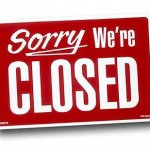
Cycles of Failure and Cycles of Success and their Implications on Service Profit Chain. This article outlines the key drivers of success for service organisations exploring issues in the works of Schlesinger and Heskett (1991) “Breaking the Cycle of Failure in Services”. The implications of these issues on the Service Profit Chain are analysed in the report using the case of The Savoy hotel and a range of other service organisations. Key Success Drivers for Service Organisations A service organisation can be defined as “two or more people are engaged in a systematic effort to provide services to a customer, the objective being to serve a customer” (Wright and Race, 2004, p.4). Characteristics used to distinguish between manufacturing and service operations include tangible and intangible nature of output, consumption of output, nature of work, degree of customer contact, customer participation in conversion, and measurement of performance (Mishra, 2009). It has to be stressed that “the ability to manage skills and resources more effectively and efficiently was always the critical driver of success for any service organisation” (Magilo et al., 2010, p.438). Moreover, due to the specific characteristics of service organisations as described above, the role of human resources and personal interaction with customers is greater in service organisations compared to manufacturing businesses. Accordingly, the levels of employee skills and capabilities can be justly specified as crucial success factor for service organisations. Service organisations like Savoy hotel have traditionally relied on consistent quality as a key success driver, whereas for other organisations such as investment banks such JP Morgan effectively micromanaging the corporate culture has proved to be a significant driver for success. Generally, additional success drivers relevant to most types of service organisations include effective leadership, establishing strategic relationships with customers, creativity and others (Forgas et al., 2008). Cycles…
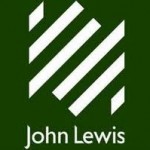
Marketing plan for John Lewis is developed on the basis of SOSTAC framework developed by Smith (2003), and the acronym is interpreted in the following manner: S Situation analysis – where are we now? O Objectives – where do we want to go? S Strategy – how are we going to get there? T Tactics – which are the details of strategy? A Action – implementation i.e. putting the plan to work C Control – measurement, monitoring, reviewing, updating and modifying Figure 1 Interpretation of SOSTAC framework Source: Smith (2003) The manner in which SOSTAC framework is going to be implemented by John Lewis is explained in great detail in following sections. Situational Analysis A range of key issues emerge from John Lewis SWOT analysis conducted in previous article. Specifically, international market expansion has been found to be an attractive business opportunity not currently utilised by the company. Engaging in international market expansion would be an effective response to the issue of market saturation in UK. Moreover, it has been found that forming strategic partnerships in global marketplace with multinational businesses can have an immense positive impact on John Lewis long-term growth. Global Marketing Objectives for John Lewis The following global marketing objectives for John Lewis are formulated according to SMART principle, the abbreviation standing for specific, measurable, achievable, realistic and time-bound: To obtain minimum 15% of department store market in Beijing and Shanghai by the end of 2015 To achieve an annual growth rate of minimum 18% for international markets To ensure that revenues from international markets account for at least 45% of total revenues for John Lewis by 2018 To be forming strategic partnerships with at least one major local company in each new market John Lewis enters in To achieve John Lewis to become…
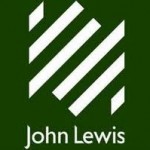
SWOT analysis stands for strengths weaknesses, opportunities, and threats in relation to a business and it is an effective strategic analytical tool for company analysis. The following table illustrates John Lewis SWOT Analysis in relation to its entry into the Chinese market: Strength Strong brand image Strong online presence Effective level of employment relationships Extensive product range Weaknesses Absence of international business experience Recent slump in profits Lack of effective marketing strategy Lack of competitive advantage Opportunities International market expansion Development of new unique selling propositions Formation of strategic partnerships in global markets New product development Threats Failure in new markets due to cultural differences Negative effects of new legislations Cash flow problems Emergence of new competitors with stronger competitive advantage John Lewis SWOT analysis
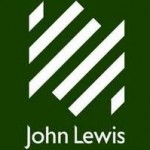
John Lewis Porter’s Five Forces Analysis. The level of competitive environment in Chinese market of department stores is best analysed with the application of Porter’s five forces model which specifies five individual forces that form the competitive environment in a marketplace. The level of existing competition is intense in Chinese department store market with the largest market share divided between such companies as Lane Crawford, Lotte Mart, Maoye International, Mitsuokoshi, and New World Department Store China Limited. Barriers to entry into the market. Chinese government has continually relaxed rules and regulations for starting businesses during the last several decades (Han et al., 2011), which has resulted in barriers for entering department store business lowered. Customer bargaining power is high in Chinese department store market. This is caused by the high level of competition in the marketplace. Threat of substitute products and services in China in relation to John Lewis department store is highly limited and this situation increases the level of attractiveness of the market. Supplier bargaining power. Interestingly, “in China, the bargaining power of suppliers was once very large due to the shortages and the planned price system” (Zhuang et al., 2003, p.40). However, as the principles of free market economy are increasingly being adopted in China, supplier bargaining power is diminishing. References Han, J., Liu, R. & Zhang, J. (2011) “Globalisation and Wage Inequality: Evidence from Urban China” Zhuang, G., Herndon, N.C. & Zhou, J.N. (2003) “The Transforming Structure of Cometition in China’s Retail Industry” Journal of Marketing Channels, Vol. 11(1)
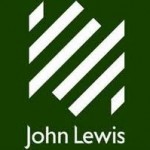
John Lewis Partnership plc is UK partnership company that owns 37 John Lewis department stores, and 277 Waitrose supermarkets across the UK and a set of other businesses. The partnership employs 81,000 permanent staff that is referred to as Partners, who contribute to the annual gross sales of over £8.7 billion (About Us, 2012, online). Dedicated to the vision of its founder John Spedan Lewis ‘to create a company dedicated to the happiness of the staff through their worthwhile and satisfying employment in a successful business, John Lewis has been able to provide all its Partners with 18% bonus on their share profit for the financial year of 2010/2011 at a total cost of £194.5m. (Annual Reports and Account, 2011) It is important to note that “John Lewis’s strategy is remarkably clear and straightforward: partners should gain satisfaction from their works and status; customers should be recruited for the long term and profit is essential to enable growth and returns to all” (Isles, 2010, p.120). This strategy has enabled the company to charge customers premium prices for products and services it offers. John Lewis Environmental Trends Analysis The necessity for John Lewis to engage in international market expansion is justified by following factors and environmental trends: 1. Retail market saturation in UK. Retail market in UK is becoming highly saturated (Perrey and Spillecke, 2011) and this situation makes long-term growth prospects for John Lewis in local market obscure. Therefore, engagement in international market expansion is an appropriate strategy to be adopted by senior level management in current situation. 2. Attractive opportunities in Chine market. China is being perceived by many as a rapidly emerging superpower. Moreover, it has been estimated that “sales of luxury goods in the country reached 212 billion yuan in 2010 and probably grew 25 to…
